 Deception by Nina Croft
Deception by Nina Croft Format: eARC
Source: supplied by publisher via NetGalley
Formats available: paperback, ebook
Genres: paranormal romance, science fiction romance
Pages: 400
Published by Entangled: Amara on November 23, 2020
Purchasing Info: Author's Website, Publisher's Website, Amazon, Barnes & Noble, Kobo, Bookshop.org
Goodreads
Brave new world or the same old crap?
Warlock Milo Velazquez has always dreamed of a day when “monsters” like him don’t have to hide in the shadows. Now, on a planet far from Earth, he’s hoping the old prejudices have been left behind. Though from what he’s seen so far—not a chance.
Their new leader could make life a living hell for Milo and the other immortals illegally transported across the galaxy. Under cover, he scopes out the threat, but he never expected to find a beautiful woman locked in a cell underground. He should ignore her and focus on his mission, but instead he sets her free.
Milo has met all kinds, paranormal creatures and humans, in his centuries of life, but Destiny is like nothing he’s ever encountered before. She’s flawless, and strangely naïve, though she can spout off facts like a walking encyclopedia. He isn’t sure who—or what—she is, or why someone so innocent would be a prisoner.
All he knows is Destiny is different...and finding out why could be their only hope for survival.
Each book in the Dark Desires Origins series is STANDALONE:* Malfunction* Deception
My Review:
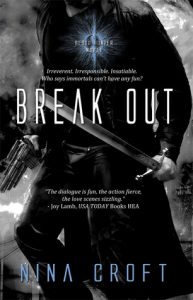 It is just so damn good to see Rico Sanchez again. He was my introduction to the original series, all the way back in the original and entirely too short version of Break Out in 2011. I liked that book the first time I read it, absolutely loved it in the expanded edition in 2013, and have followed the series ever since just to follow the misadventures of this vampire in space.
It is just so damn good to see Rico Sanchez again. He was my introduction to the original series, all the way back in the original and entirely too short version of Break Out in 2011. I liked that book the first time I read it, absolutely loved it in the expanded edition in 2013, and have followed the series ever since just to follow the misadventures of this vampire in space.
Along with marveling at the whole concept of vampires in space, and wondering why I hadn’t seen this before – but definitely wanted to again!
At the time of Break Out and the entire Dark Desires series, this part of the galaxy had been settled by refugees from Earth for several centuries. The empire they founded on the cornerstones of a universal church and an authoritarian regime has become settled if not stable. The Terran origins of the humans in the Trakis system has receded back into history, to the point of myth and legend.
Except for Rico Sanchez, who lived through ALL of it from the Spanish Inquisition to the time period of the original story in 3058. We’ve seen hints of what happened in between, but didn’t have the full story.
At least not until the Dark Desires Origins series began earlier this year with Malfunction.
While in the first book in this new series it’s the ship that seems to be malfunctioning, the premise of the series as a whole is that the entire Earth was malfunctioning, in a way that we can kind of see from here. The consequence of that malfunction was an expedition to a galaxy far, far away where humans could re-establish themselves as a species – and probably mess up an entire new galaxy as well.
Certainly the “migration” was a clusterfuck in all sorts of very human ways. The best and the brightest were supposed to be “Chosen Ones’, but instead all the places on the 24 ships were taken up but the “rich and powerful” who purchased their places through bribery and kickbacks.
And one ship, just one ship, where Rico Sanchez replaced half of the originally intended passengers with people more-or-less like himself. Vampires, werewolves and other shifters. And at least one warlock.
Not a wizard like Harry Potter – although comparisons could be, and frequently are made. Rather, Milo Velazquez is the immortal “child” (he was over 500 years old before the migration) of a power-hungry witch and a demon. Not just any demon, either, but one of the lords of the seven Hells.
He’s also Rico’s nephew – sorta/kinda – so Rico doesn’t take no for an answer when Milo says he’d rather take his chances on Earth. Milo wakes up aboard Rico’s ship after 500 years of cryo-sleep in a place he swore he’d never go doing the one thing he swore he’d never do again.
Falling in love.
 Escape Rating B: I’m enjoying this series so far because its an origin series for something I already loved. Based on reviews, readers new to the series are finding Malfunction and now Deception a great way to get into something marvelous, so don’t feel like you have to go all the way to Break Out to get into this one.
Escape Rating B: I’m enjoying this series so far because its an origin series for something I already loved. Based on reviews, readers new to the series are finding Malfunction and now Deception a great way to get into something marvelous, so don’t feel like you have to go all the way to Break Out to get into this one.
The setup to this series reminds me, in a peculiar way, of the way that Amanda Quick’s Arcane Society series took to the stars to become Jayne Castle’s Harmony series. People with psi powers on Earth first banded together to protect themselves, and then took themselves to the stars where they could fully develop their powers.
(Quick and Castle are the same person, Jayne Ann Krentz, and all of her books are wonderful.)
Robin D. Owen’s Celta series has a similar origin to Harmony. But both are based on the premise that there are people with psi powers here on Earth now who are forced to hide their powers and that they leave Earth not necessarily because the planet as a whole is FUBAR’d but because their particular situation is.
In the Dark Desires world, it’s the paranormal beings who are forced to lead a hidden existence, and who take advantage of a situation to get off Earth along with everyone else.
While most of the people on Rico’s ship are the traditional population of paranormal romance, Milo is a bit different. While it’s impossible not to see the influence of Harry Potter on his presence in this series, Milo explicitly isn’t quite like Harry even if he can do many of the same things.
One of the things that he and Rico have in common is that the “Church”, whatever its current incarnation, has always seen both of them as infernal creatures, eternally damned, who can be persecuted, crucified or burned at the stake – occasionally all of the above – anytime they need a scapegoat to keep the downtrodden masses occupied.
Neither of them is human and they only pretend to be when it suits them. Their views on humanity in general and the Church in specific are often quite scathing while being at the same time completely understandable.
All of which makes Milo’s attraction to the strangely innocent Destiny that much more fascinating. Destiny is naïve in a way that Milo hasn’t been for centuries. She’s not stupid, she’s just sheltered. And the more she breaks out of that shelter the deeper Milo falls – as much as he doesn’t want to.
The reasons behind Destiny’s sheltering turn out to be the heart of everything wrong with the new colony on Trakis Two. Discovering who and what she really is drives her journey and the dramatic tension of the entire story that keeps the reader on the edge of their seat from the minute she awakens to the second she breaks out of her mental cell for good, forever, and especially for Milo.
I am definitely looking forward to more of this prequel series. Hopefully in the not too distant future!
~~~~~~ TOURWIDE GIVEAWAY ~~~~~~

To celebrate the release of DECEPTION by Nina Croft, we’re giving away a paperback copy of Malfunction, the first standalone novel in the Dark Desires Origins series!
GIVEAWAY TERMS & CONDITIONS: Open to US shipping addresses only. One winner will receive a paperback copy of Malfunction by Nina Croft. This giveaway is administered by BookMojo on behalf of Entangled Publishing. Giveaway ends 12/31/2020 @ 11:59pm EST.

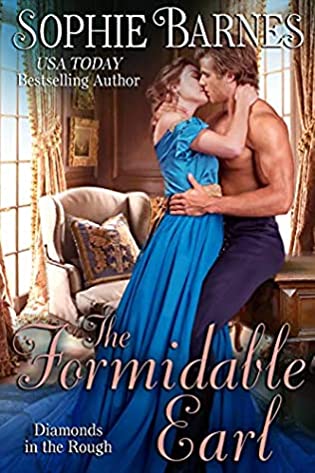 The Formidable Earl (Diamonds in the Rough, #6) by
The Formidable Earl (Diamonds in the Rough, #6) by  The Formidable Earl harkens back to the first book in this series,
The Formidable Earl harkens back to the first book in this series, 
 All of that being said, I really, really liked Ida. She’s a terrific heroine, forthright and proactive with plenty of agency. She was more middle-class to begin with, but society has completely rejected her so she’s pretty much said “to hell with it and the horse it rode in on.”
All of that being said, I really, really liked Ida. She’s a terrific heroine, forthright and proactive with plenty of agency. She was more middle-class to begin with, but society has completely rejected her so she’s pretty much said “to hell with it and the horse it rode in on.”
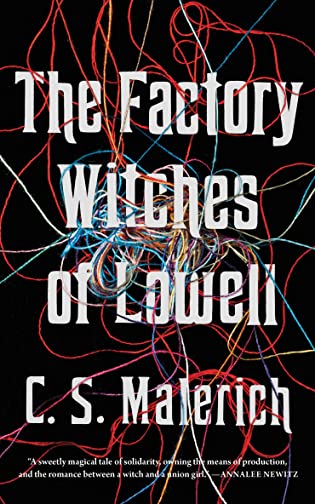 The Factory Witches of Lowell by
The Factory Witches of Lowell by 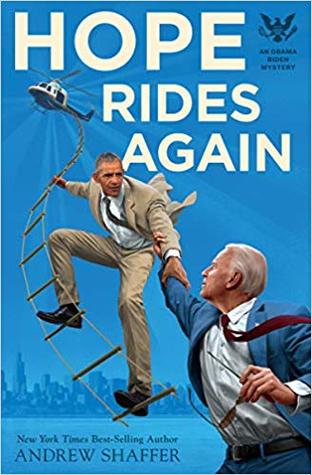 Hope Rides Again (Obama Biden Mysteries #2) by
Hope Rides Again (Obama Biden Mysteries #2) by 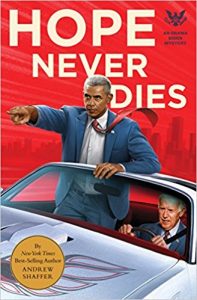 Escape Rating B: One of the things I was not expecting from this story was just how steeped in nostalgia for Chicago it turned out to be. Even if that nostalgia was a mixture of love for Chicago as it is now, in all of its sprawling, brawling and seedy glory, and the Chicago of popular imagination of its storied past, the Chicago of the broad shoulders and the even bigger guns.
Escape Rating B: One of the things I was not expecting from this story was just how steeped in nostalgia for Chicago it turned out to be. Even if that nostalgia was a mixture of love for Chicago as it is now, in all of its sprawling, brawling and seedy glory, and the Chicago of popular imagination of its storied past, the Chicago of the broad shoulders and the even bigger guns. The Light at Wyndcliff (Cornwall, #3) by
The Light at Wyndcliff (Cornwall, #3) by 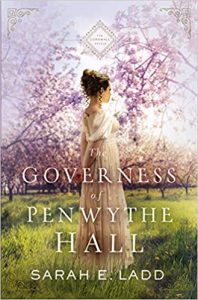 The plot wraps around the sometimes exciting, sometimes dangerous and always criminal smuggling operations that the rougher bits of the Cornish coast are notorious for But this is not a story that romanticizes smuggling. Rather, it paints an all-too-clear portrait of the rot that burrows into the whole town when smuggling – and the protection of it – become the whole town’s economic mainstay.
The plot wraps around the sometimes exciting, sometimes dangerous and always criminal smuggling operations that the rougher bits of the Cornish coast are notorious for But this is not a story that romanticizes smuggling. Rather, it paints an all-too-clear portrait of the rot that burrows into the whole town when smuggling – and the protection of it – become the whole town’s economic mainstay.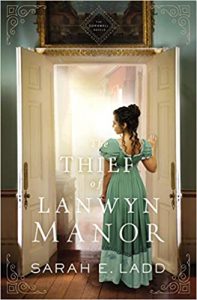 Escape Rating A-: A romance between Liam and Evelyn does happen in this story, but it doesn’t feel like the romance is the point of the story. More like it’s the reward for doing the right thing. Figuring out what that right thing is, that feels like it’s the central point of the story. And that’s the story that swept me away.
Escape Rating A-: A romance between Liam and Evelyn does happen in this story, but it doesn’t feel like the romance is the point of the story. More like it’s the reward for doing the right thing. Figuring out what that right thing is, that feels like it’s the central point of the story. And that’s the story that swept me away.
 Return to Virgin River (Virgin River, #19) by
Return to Virgin River (Virgin River, #19) by 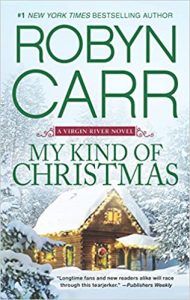 And for any long-term readers who may have lost track of everyone in the 8 year hiatus since the previous book in the series,
And for any long-term readers who may have lost track of everyone in the 8 year hiatus since the previous book in the series,  On the surprising but definitely plus side of the reading equation, Return to Virgin River turned out to be an unexpectedly poignant counterpart to yesterday’s book,
On the surprising but definitely plus side of the reading equation, Return to Virgin River turned out to be an unexpectedly poignant counterpart to yesterday’s book,  Millicent Glenn's Last Wish by
Millicent Glenn's Last Wish by 
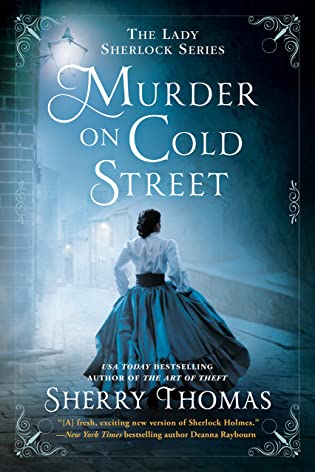 Murder on Cold Street (Lady Sherlock, #5) by
Murder on Cold Street (Lady Sherlock, #5) by 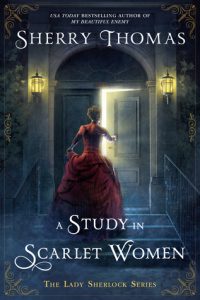 Welcome to another captivating AND frustrating entry in the
Welcome to another captivating AND frustrating entry in the  Inspector Treadles, who serves as Charlotte’s Inspector Lestrade, meaning that Treadles is the Scotland Yard detective who both assists and is assisted by Charlotte, and who therefore gets to take the official credit for the cases she solves, has been accused of murder. Considering that he was found standing over two dead bodies inside a locked room with his service revolver in his hand, it is not surprising that he was assumed to be the killer.
Inspector Treadles, who serves as Charlotte’s Inspector Lestrade, meaning that Treadles is the Scotland Yard detective who both assists and is assisted by Charlotte, and who therefore gets to take the official credit for the cases she solves, has been accused of murder. Considering that he was found standing over two dead bodies inside a locked room with his service revolver in his hand, it is not surprising that he was assumed to be the killer.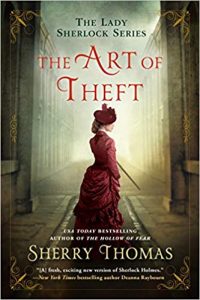 Escape Rating B: As should be clear by now, I feel a bit of a push-pull about Charlotte. She fits her time – more or less – and her time is frustrating. One of the interesting things about this particular entry in the series is the way that Lord Ashburton is beginning to understand just how privileged he is, not in the sense that he is a privileged member of the upper class, although he certainly is, but that his movements through the world are eased immeasurably simply because he is a man.
Escape Rating B: As should be clear by now, I feel a bit of a push-pull about Charlotte. She fits her time – more or less – and her time is frustrating. One of the interesting things about this particular entry in the series is the way that Lord Ashburton is beginning to understand just how privileged he is, not in the sense that he is a privileged member of the upper class, although he certainly is, but that his movements through the world are eased immeasurably simply because he is a man.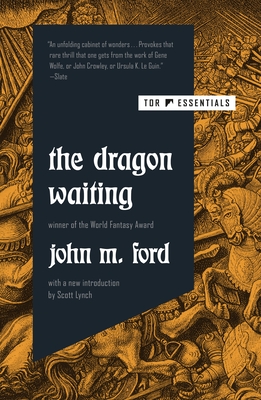 The Dragon Waiting by
The Dragon Waiting by 
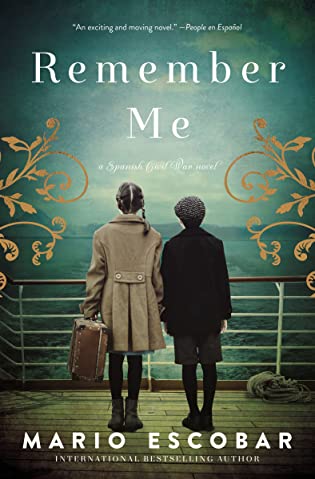 Remember Me: A Spanish Civil War Novel by
Remember Me: A Spanish Civil War Novel by 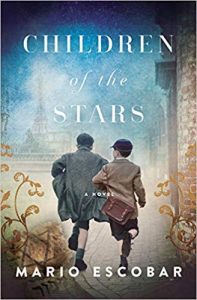 I picked this book up because I was moved by
I picked this book up because I was moved by